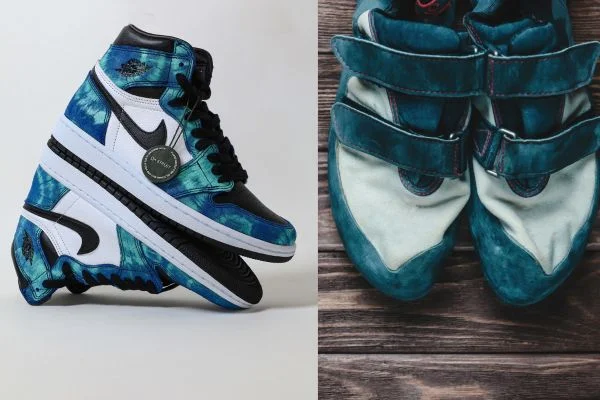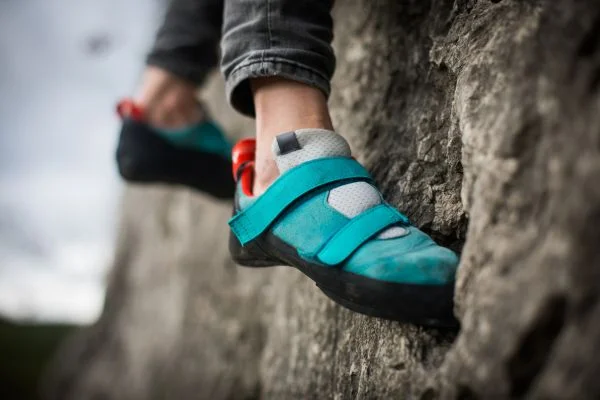If you’re a rock climber, you’ve heard conflicting information about climbing shoes. Some people say they are essential for improving your performance, while others argue that climbing in shoes can damage your feet. So what’s the truth? Is it safe to wear climbing shoes? Let’s take a closer look.
Are Climbing Shoes Bad for Your Feet?
When it comes to whether climbing shoes are bad for your feet, the answer is more complex than you might think. On the one hand, proper-fitting climbing shoes can provide a tremendous advantage while scaling a wall – they’re designed to be snug enough that they won’t slip off and provide extra grip on rocks and holds.
On the other hand, climbing shoes may cause blisters and callouses if not worn properly. Furthermore, some climbers find them uncomfortable and opt for regular sports shoes after a few hours.
The key takeaway here is that the right thing for your feet depends on how often you climb and what kind of terrain you’re tackling – going barefoot may give your feet more freedom while walking around, but it could make climbing harder!
Also Read: Can Women Wear Men’s Climbing Shoes?
The Benefits of Climbing Shoes
Climbing shoes give you the grip and power you need to conquer your favorite route and push yourself to new heights. Let’s explore why having the right climbing shoes is so important.
Grip & Power
Climbing shoes are designed with extra grip on the soles, which helps climbers stick to the wall more securely. In addition, the sole of a good climbing shoe should have sticky rubber that allows it to adhere to both smooth and rough surfaces.
This will give climbers more confidence as they ascend, allowing them to focus on technique instead of worrying about slipping off their holds. In addition, good climbing shoes will give climbers power by providing support in all directions — something regular sneakers cannot do.
Protection & Comfort
Another benefit of having the right pair of climbing shoes is protection from sharp objects like cracks or edges that can create painful cuts in your feet if they aren’t adequately covered. Good climbing shoes also protect against heat exhaustion or hypothermia in cold climates by keeping your feet insulated from extreme temperatures.
Lastly, good climbing shoes should be comfortable for extended periods without causing blisters or other issues. Finding a pair of climbing shoes that fits well and provides adequate arch support is essential for successful climbs.
Durability
Finally, investing in quality climbing shoes will pay off in durability. Poorly made climbing shoes may only last one season before needing replacement, while high-quality ones can last several seasons with proper care — saving you time and money in the long run!
Climbing shoe manufacturers use leather, synthetic uppers, and rubber soles to create durable products that stand up to even the most demanding climbs.
Also Read: Does Rock Climbing Help You Lose Weight?
The Risks of Climbing Shoes
But there are risks associated with wearing too-tight climbing shoes, especially if worn for extended periods. When worn for long periods at a stretch, toes can become cramped and restricted in movement within the shoe, leading to discomfort or even pain.
Additionally, extreme pressure from the shoe on some regions of your foot may cause blisters or calluses to form on your skin after repeated use. Therefore, it is essential to ensure that your climbing shoes fit correctly to avoid injury or undue stress on your feet during long climbs.
Also Read: What Gear Do You Need For Rock Climbing?
How Climbing Shoes Are Different from Regular Shoes

Climbing shoes are designed differently than regular sneakers or other athletic footwear. Their shape is more pointed at the toes and features a higher arch to provide better climbing support.
Additionally, they have an extra layer of rubber on the soles that provide added traction to keep climbers safe while scaling walls or rocks. This rubber is usually made from Vibram or Stealth C4, which offer superior grip and flexibility, allowing climbers to move quickly even on rough terrain.
Finally, climbing shoes have a snug fit that helps them stay securely on your feet no matter what obstacles you encounter during your climb.
Also Read: What To Wear When Is Rock Climbing?
Conclusion:
In conclusion, wearing climbing shoes has pros and cons when scaling cliffsides or mountain walls. If you decide to wear them, ensure they fit correctly and don’t cause any discomfort or pain during extended use. With proper care and attention paid to fitting your footwear correctly, there’s no reason why climbing shoes won’t help improve your performance as an experienced climber!

